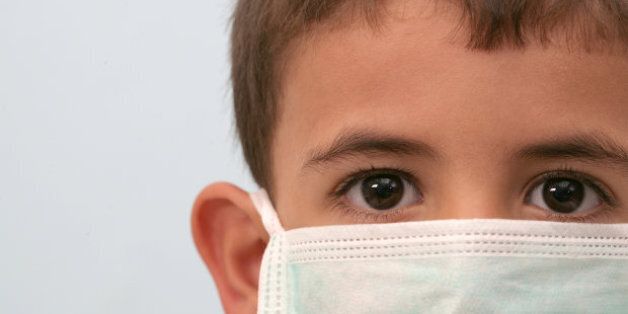
Enterovirus D-68 has already spread to 10 U.S. states and sent hundreds of children to hospital. And now the respiratory virus has been confirmed to have made at least 18 children ill in Alberta, although it's still unknown if it's the same D-68 strain causing the outbreaks in the U.S.
Meanwhile, in Ontario, the Windsor Regional Hospital is awaiting results of nearly a dozen cases of patients with severe respiratory issues.
But Dr. Eric Swartz, head of pediatrics at Richmond Hospital in Richmond, B.C., said that there shouldn't be a mass panic in Canada about this development.
"The vast majority of children who would contract EV D-68 would handle it just like any other cold and be just fine," he said. "Of course, for some reason it seems like it attacks some children with some more severity, we're seeing some more intensive care unit submissions in the United States. So, for that reason it's a concern but nothing to be alarmed at just yet."
Since children seem most at risk, here are eight things parents should know about the respiratory virus:
Who is most susceptible?
Children, particularly those under five and who have respiratory troubles, such as allergies or asthma, are more at risk.
How is the virus transmitted?
Much like the common cold, the virus is transmitted through close contact, from nose or throat secretions. "EV-D68 likely spreads from person to person when an infected person coughs, sneezes, or touches contaminated surfaces," according to the U.S. Centers for Disease Control and Prevention.
How is the virus diagnosed?
A doctor will take a swab from a patient's throat or nose and send the specimen off to a lab.
What are the symptoms?
Mild symptoms may include fever, runny nose, sneezing, cough, and body and muscle aches, according to CDC.
However, if a child gets a respiratory illness, particularly if they are coughing continuously, short of breath or breathing fast, wheezing and not able to sleep, parents should seek assistance with a physician or the emergency department, said Queen's University infectious diseases expert Dr. Dick Zoutman.
"A significant proportion of these children are having difficulties needing extra oxygen, fluids and a significant number are ending up in intensive care units and so we want to make sure that those symptoms are picked up early," he said.
"A lot of people wheeze when they get a respiratory infection. They get their puffer, everything settles down. Well that's reassuring, but if it's not settling down or you're needing to do that frequently, then you need to talk to your doctor or the emergency department."
How do you differentiate the virus from the common cold?
"I'm sure many of these cases are going to be mild and not going to compel you to go to the emergency department," Zoutman said. "If there's no shortness of breath, no difficulty breathing, no wheezing or extremely high fever, there would be no reason to go and seek help. But if it's affecting the breathing in those ways, then it's time to get help.
"We don't want people rushing over just because they got a runny nose."
Are their ways to prevent it?
Hand washing and hand hygiene is the best way to prevent the spread of the virus. "It's not perfect but it's a useful preventative technique," Zoutman said.
Much like trying to prevent the spread of a cold or flu, people should avoid touching their eyes, nose and mouth with unwashed hands, the CDC says. It also recommends frequently disinfecting touched surfaces, such as toys and doorknobs, especially if someone is sick.
Is there a cure?
There is no vaccine, anti-viral or penicillin-like treatment for the virus. But there are supportive treatments to deal with the symptoms including extra oxygen and medications to counteract the wheezing.
"Being hydrated is important, controlling the fever and good monitoring and good nursing care can make all the difference," Zoutman said.
How serious is the virus?
Most children will react to the virus like they have a common cold, exhibiting mild or no symptoms at all.
For example, in Colorado, nearly 900 children with respiratory-related issues came into the emergency department of their children's hospital over the last few weeks, but fewer than 10 per cent were admitted.
However, of those that were admitted, 10 to 15 per cent had to be put on ventilators "which is not normal," Zoutman said. "That's a high rate for respiratory viruses."
"You need to be aware and if your children have symptoms, particularly with the breathing troubles, then you need to think, 'Hmmm maybe I better get that looked at sooner rather than later.'
"People hum and haw in the middle of the night, do they want to bundle up their child and go to the emergency department? But if their [child is] short of breath, wheezing significantly, and not behaving the way they do with simple intervention, that's something to be worried about."